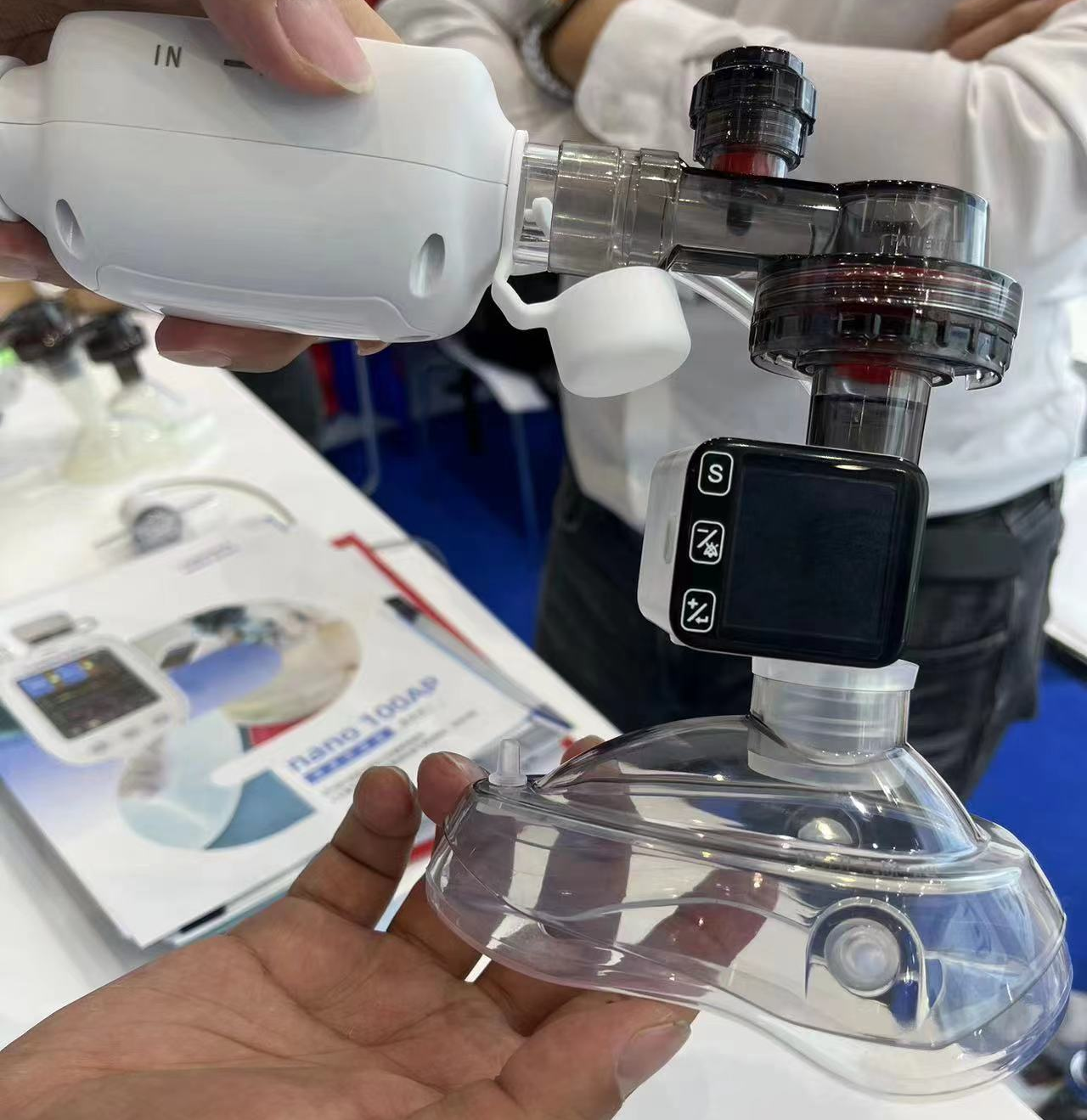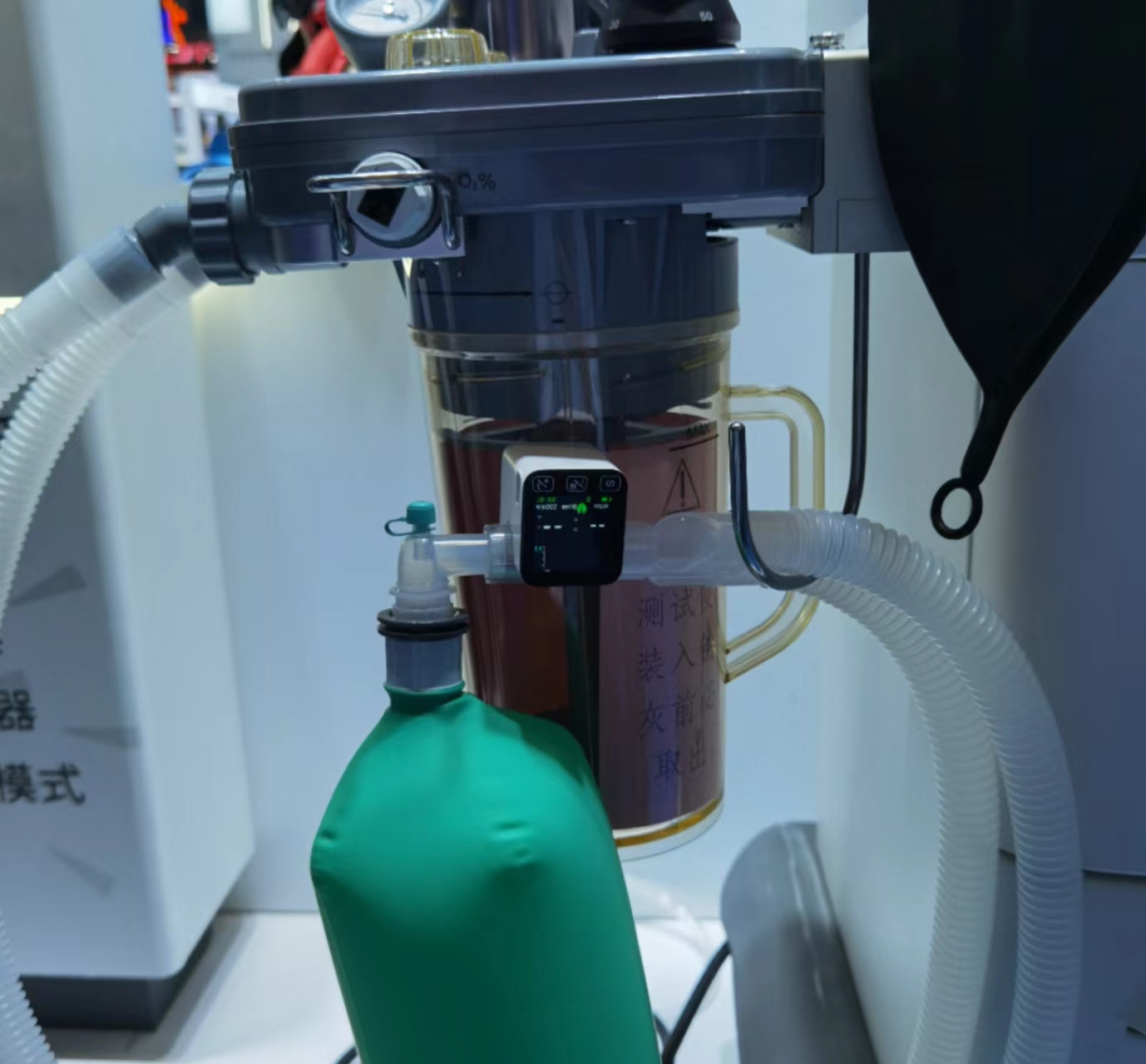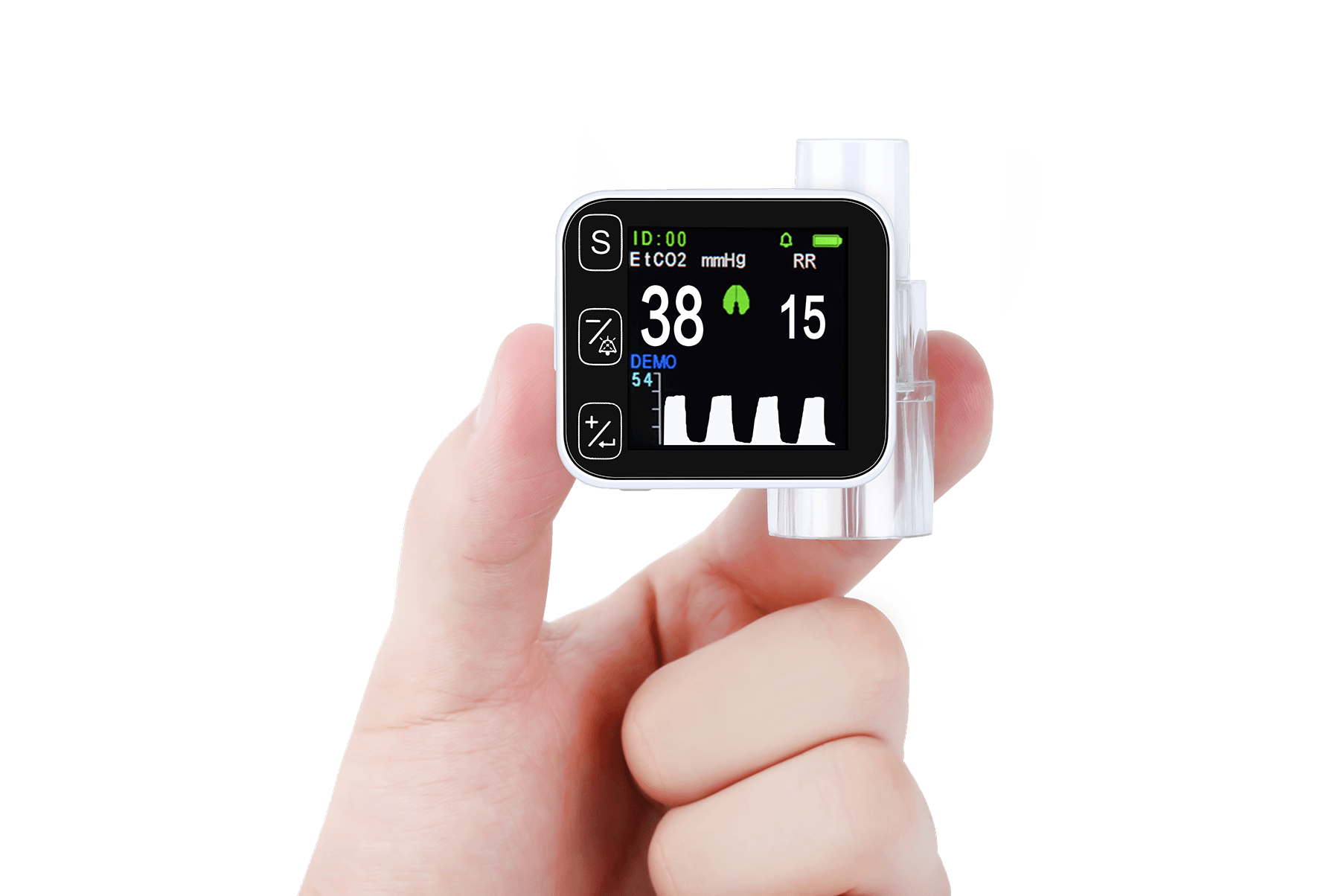The palm capnography monitor is a portable device designed for monitoring end-tidal carbon dioxide (EtCO2) levels in various medical scenarios. It is not only applicable in emergency situations but also suitable for bedside monitoring in the ICU and integration with mechanical ventilators. Its compact and lightweight design allows for easy portability and immediate monitoring upon startup. Additionally, it features an intuitive data display interface that provides real-time respiratory monitoring data and seamless connectivity with other medical devices, facilitating comprehensive patient care by healthcare professionals. Therefore, the handheld capnography monitor has broad application prospects in various medical settings, offering convenience and efficiency to clinical healthcare work.
In emergency situations, the palm capnography monitor serves the following specific purposes and provides assistance:
1. Monitoring Respiratory Function: Real-time monitoring of a patient's respiratory status, including respiratory rate and depth, allows healthcare professionals to promptly identify any abnormalities and take appropriate therapeutic measures in emergency situations such as suffocation or respiratory failure.
2. Assessing Ventilation Effectiveness: Monitoring end-tidal carbon dioxide (EtCO2) levels helps assess the effectiveness of a patient's ventilation. Normal ventilation results in stable EtCO2 levels, while abnormal ventilation may lead to increased or decreased EtCO2 levels. Understanding ventilation effectiveness assists in adjusting respiratory support measures promptly to ensure the patient's airway patency.

3. Identifying Circulatory Function Abnormalities: Respiratory and circulatory functions are closely related, and respiratory abnormalities often accompany circulatory function abnormalities in emergency situations. The handheld capnography monitor can help healthcare professionals identify circulatory function abnormalities by monitoring relevant indicators of respiratory and circulatory function, enabling timely intervention to maintain the patient's circulatory stability.
4. Guiding Mechanical Ventilation: In cases requiring mechanical ventilation during emergencies, the handheld capnography monitor assists healthcare professionals in monitoring ventilation effectiveness and guiding adjustments to ventilation parameters and operating techniques, ensuring effective and safe ventilation.
5. Providing Real-time Feedback: The handheld capnography monitor typically provides real-time feedback by displaying monitoring results and issuing alerts promptly. This real-time feedback helps healthcare professionals quickly understand the patient's respiratory status, make timely decisions, and take appropriate actions, thereby improving the efficiency and success rate of emergency care.

The palm capnography monitor provides accurate, real-time respiratory monitoring in emergency situations, helping healthcare professionals promptly identify respiratory and circulatory abnormalities, guide ventilation therapy, and provide real-time feedback, effectively supporting emergency care and improving patient survival and recovery rates.
